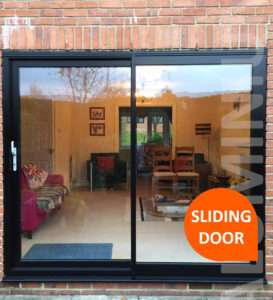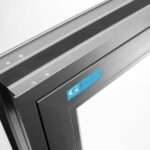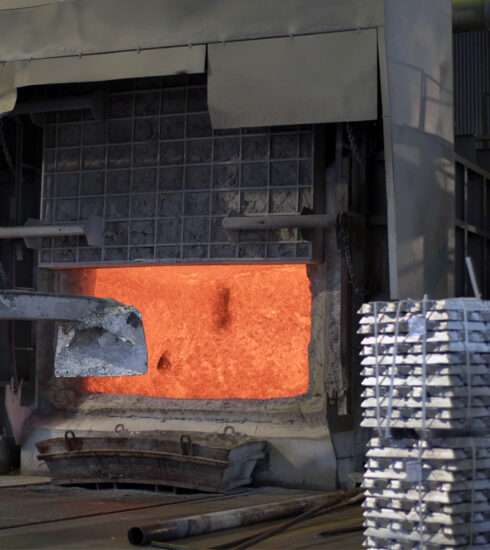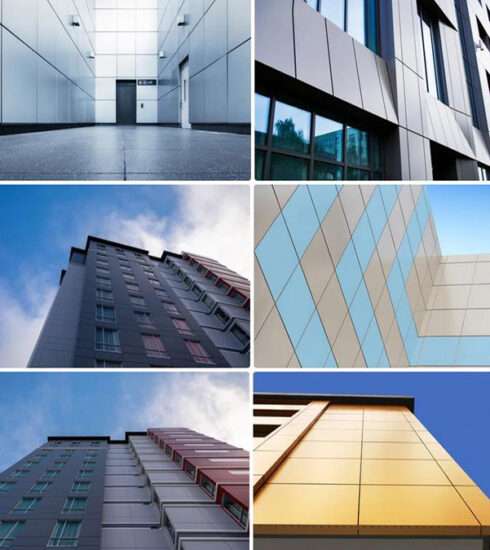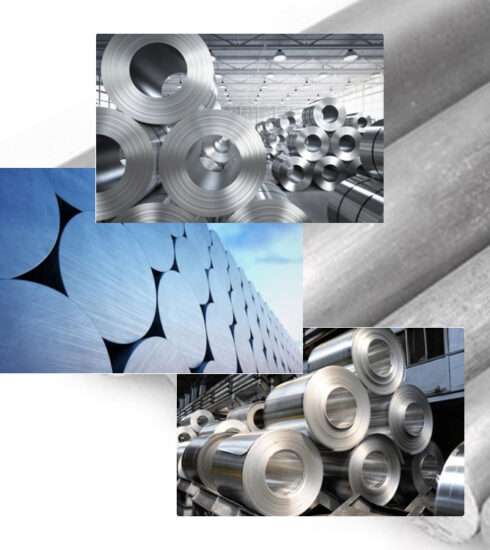Aluminium and Its Various Types
Unlocking the Secrets
Aluminium is a light metal which has a silvery white colour in its pure state and which is so soft that it can easily be stretched and used to make fine wires. It is also suitable for rolling into thin sheets or foils. Aluminium is the third most abundant element (after oxygen and silicon) and is very reactive. For this reason it only exists in chemically bonded form.

The Dane Hans Christian Oersted discovered the element of aluminium in 1825 when he deconstructed alumina into its elements. This is where aluminium gets its name from, derived from the Latin word for alum, “alumen”. Two years later the German chemist Friedrich Wöhler was successful in producing aluminium powder. At this time aluminium was still more valuable than gold and had a higher price.
Aluminium is not only used particularly in the packaging industry, but has also primary choice in house & building improvement (Windows, Doors & Facades) & vehicle construction for some decades now, due to its low density. By combining it with magnesium, silicon and other metals, an alloy can be manufactured from aluminium with a strength similar to that of steel. The metal is also used in aircraft construction and in space technology. Because of its electrical conductivity aluminium is also used as a conductor material in power lines.
Today, aluminium is required in every industrial sector. Its specific qualities make it indispensable in many areas of application, such as the transport and construction industry, mechanical engineering or the packaging industry. Aluminium is not only very light but also very strong. It hardly corrodes and can also be recycled very easily.
Aluminium is produced primarily in China, Russia and the USA, while the most significant aluminium ore deposits can be found in India, Australia, Guinea, Brazil, Jamaica, Guyana and Indonesia.
What is Aluminium and How Is It Made?
Hydrated alumina, better known as bauxite ore, is what’s mined from the Earth’s crust and refined to extract aluminium. Once extracted from the bauxite, pure aluminium is often much too soft and ductile for commercial use.
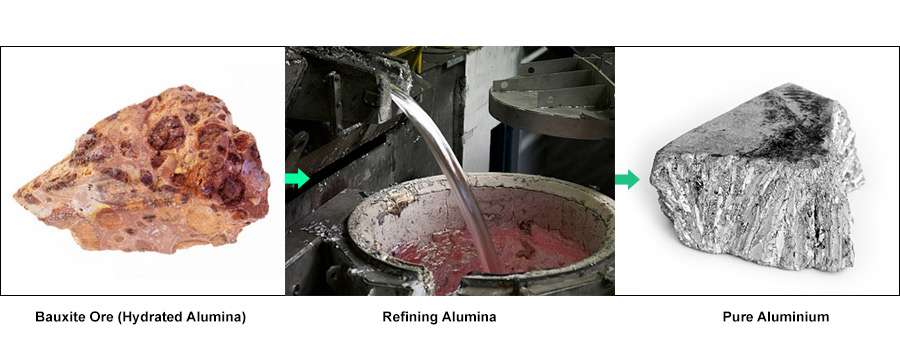
For this reason, aluminium is almost always combined with other alloying metals or elements. These commonly include copper, magnesium, manganese, silicon, tin, and/or zinc. By creating an aluminium alloy, the overall strength of the metal is improved as well as many other varying physical properties necessary for application.
What is Aluminium Smelting?
Aluminium smelting refers to the industrial process of extracting aluminium metal from its ore, bauxite. This process involves several steps, beginning with the extraction of bauxite from the earth’s surface. The mined bauxite is then refined to produce alumina (aluminium oxide), which serves as the precursor for aluminium metal. In the electrolytic reduction stage, alumina is dissolved in molten cryolite and subjected to an electric current, resulting in the decomposition of alumina into aluminium metal and oxygen gas. The molten aluminium is collected, purified, and cast into ingots for further processing. While aluminium smelting is energy-intensive, the resulting metal is valued for its lightweight properties, corrosion resistance, and recyclability, making it essential for various industrial applications.
Types of Aluminium
Pure aluminum is extremely soft, and often not strong enough for commercial uses and building projects.
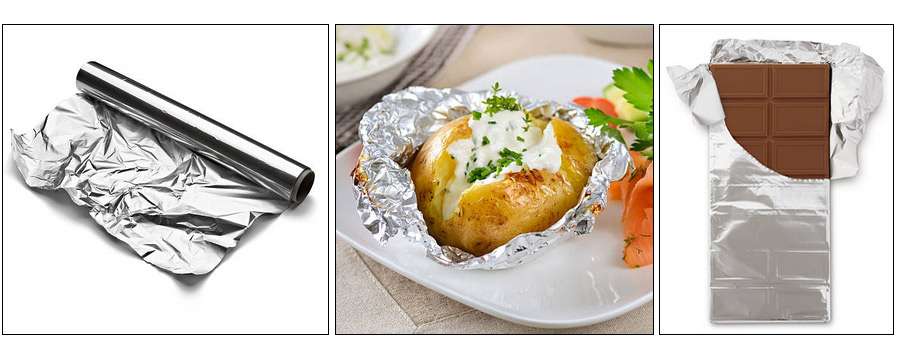
In order to fix this, pure aluminium is mixed with other elements such as iron, silicon, copper, magnesium, manganese, and zinc. By alloying with these other elements, aluminium’s properties such as strength, density, work ability, electrical conductivity, and corrosion resistance are enhanced.
During the aluminium alloying process, three different types of alloys can be produced depending on their attributes and what methods are used to treat them: commercially pure, heat-treatable, and non heat-treatable.
After Aluminium alloying these series comes out:
Aluminium 1000 (99% Pure)
1000 series aluminium is regarded as commercially pure aluminium. It contains a minimum of 99% aluminium with relatively no alloying additions. 1000 series aluminium is non-heat treatable, but this material exhibits high electrical and thermal conductivity, excellent corrosion resistance and excellent work ability.
Aluminum 1100
It is known for its superior corrosion resistance, formability, conductivity, and high weldability. It is not used in applications that require high strength or hardness. 1100 is non-magmetic, weldable, and not heat treatable.
1100 is typically used for chemical equipment, food handling equipment, decorative trim, lighting equipment, and heat exchangers. If excellent malleability and corrosion resistance are your primary goals, 1100-H14 is an excellent choice.
Aluminium 1100-1145
1100-H18(Trade Name) is the strongest temper of the 1100 series aluminium alloy. With minium aluminium content of 99%, 1100-H18 is regarded as commercially pure aluminum. 1100-H18 has excellent work ability, corrosion resistance, weldability, and high thermal conductivity.
1145-H19(Trade Name) is a non-heat treatable, commercially pure aluminium alloy. It has high formability, good electrical conductivity, and corrosion resistance.
Aluminium 2011
2011-T3(Trade Name) aluminium boasts good machine ability, especially free-cutting qualities, and good mechanical properties. It also has excellent surface finish capabilities. When machined, chips of the metal break off small and easily, allowing for smooth finishes and tight tolerances. Weldability, strength, and anodizing response are all rated as average at best, and this alloy does not have a high level of corrosion resistance.
2011 is typically used for screw machine parts, small precision gears, and precision machine parts such as clock, camera, and speedometer parts.If the ability to make your parts quickly and easily is the most important, and strength is not the primary desire, 2011-T3 is an excellent option.
Aluminium 2024
Copper is the main alloying ingredient in 2024 aluminum. It is very strong compared to most aluminium alloys, and has average machin ability, but the copper component of this alloy makes it susceptible to corrosion. Many items in this alloy are produced with a clad surface to protect the underlying material. In addition, 2024 is not considered to be weldable.
Finally, the fatigue resistance of 2024 make it a primary choice when the application is expected to be under stress or strain for prolonged periods. It is typically used in aerospace applications, bolts, clock parts, computer parts, hydraulic valve parts, nuts, pistons, and gears. If you need durable and strong aluminium material, this is an excellent choice.
Aluminium 3003
3003 aluminium is is highly workable, formable, and weldable, with exceptional corrosion resistance. It is an alloy that is particularly popular for outdoor projects that require extensive forming or joining operations. It is typically used in chemical tanks, trim, pressure vessels, piping, and decorative parts.
Aluminium 3004
Aluminum 3004 is a widely used aluminum alloy that is commonly used for various applications in different industries.Aluminium 3004 is commonly used to make beverage cans due to its excellent formability, corrosion resistance, and low weight. It is typically used in Beverage Cans, Heat Exchangers, Roofing and Siding, Chemical and Food Processing, Cookware, and Automotive Components.
Aluminium 5052
5052 is the aluminium alloy most suited to forming operations, with good workability and higher strength than that of either 1100 or 3003. 5052 is not heat-treatable, but is stronger than most of the 5xxx series of aluminiums. It has very good corrosion resistance, and can be easily welded as well. 5052 is not a good choice for extensive machining operations, as it has only a fair machin ability rating. It is typically used in aircraft fuel and oil lines, fuel tanks, sheet metal work, appliances, lighting, wire, and rivets.
Aluminium 5086
5086-H32 aluminium is frequently found in marine applications, with higher strength capacity than aluminum 5052 or 5083. 5086 has superior corrosion resistance, moderate strength, and good formability. 5086 is non-magnetic, easily weldable, and heat treatable. It is typically used in pressure vessels, cryogenics, towers and rigs, oil/gas piping, and armor.
Aluminium 6060
6060 aluminium is a medium strength alloy more closely related to 6063 than to 6061 but will have more magnesium than 6063. This alloy is mainly found in Europe with metric sizes and is commonly heat treated to a temper with higher strength but low ductility. 6060 alloy is very good for anodizing. It is typically used in including, doors and windows frames, Electrical components and conduits, Tube for irrigation systems, Curtain Walls, Lighting, furniture and picture frames, Carpet edging, Railings and fences, Applications where surface finish is important The main alloy ingredients of 6060 aluminium are magnesium and silicon.
Aluminium 6061
6061 Aluminium is, by any measure, the most commonly used aluminium alloy in the world. It is useful in almost any application due to its strength, heat treat ability, comparatively easy machining, and weldability. If that were not enough, it is also capable of being anodized, adding a layer of protection for finished parts. It is typically used in aircraft components, cameras, couplings, marine fittings and hardware, electrical components and connectors, decorative hardware, pins, brake and hydraulic pistons, valves, and bicycle frames.
Aluminium 6063
6063 aluminium is the most popular alloy for extrusion and so it is a natural consideration. This alloy is widely used in architectural applications. Because of this, it is often referred to as architectural aluminum.
6063-T6 aluminium is used for applications such as railing, door window frames, door frames, roofs, balustrading, sign frames, shop fittings, irrigation tubing, building products, electrical, marine, piping, recreation equipment, storage tanks, truck frames & trailers.6063 is rated as “Good” for forming and cold working operations, “Excellent” for anodizing, and “Fair” for machining.
The T6 refers to the temper or degree of hardness, which is achieved by precipitation hardening. This grade has a good strength-to-weight ratio and is also heat-treatable. With great formability and weldability, it is used for engineering and structural applications, doors, windows, furniture, and more.
Aluminium 6101
6101 is best suited for applications involving moderate strength and maximum electrical conductivity.It is typically used for electrical bus bars where mechanical strength is also a requirement.
Aluminium 6262
6262 aluminum was designed for operations where significant machining is required.It is typically used in camera parts, couplings, marine fittings, decorative hardware, hinge pins, knobs, nuts, oil line fittings, appliance fittings, valves and valve parts.
Aluminium 6351 T6
6351-T6 Aluminum Rod is made up of an aluminum alloy with 96% aluminum, silicon, magnesium, manganese, iron, zinc, titanium, copper and other elements in the composition. The melting point is 600 °C (1110 °F) lower than stainless steel (1400-1510°C). The material has a good thermal expansion and electric conductivity. The aluminum 6351 alloy is used in manufacturing tubes and pipes. These pipes and tubes are used to make Ladders.
Aluminium 7050
7050 Aluminum is similar to the other popular 7000 series aluminum alloy 7075, however it is less quench sensitive. This allows the alloy to maintain strength properties over time better than other high strength alloys, especially in thick sections. 7050 T7451 also displays better corrosion resistance, exfoliation resistance, and toughness than standard high strength alloys making it very popular in the aerospace industry where it is used for bulkheads, fuselages, and wing skins.
Aluminium 7075
7075 aluminum is one the strongest aluminum alloys. Its high yield strength (>500 MPa) and its low density make the material a fit for applications such as aircraft parts or parts subject to heavy wear. Its principal alloying ingredients are zinc and copper, which make it one of the highest-strength aluminum alloys that are available.It is typically used in aircraft, missiles, spacecraft, and other defense applications.


